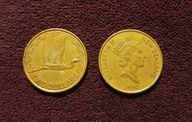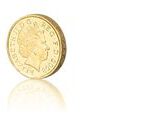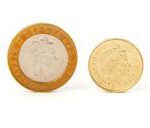Investing in Gold ETFs in Your IRA: A Comprehensive Guide for Researchers
Gold, often referred to as the “king of precious metals,” has long been a sought-after asset for investors looking to diversify their portfolios and hedge against economic uncertainties. While traditional methods of investing in physical gold, such as purchasing coins or bars, remain popular, Gold Exchange-Traded Funds (ETFs) have emerged as a convenient and accessible alternative. In this comprehensive guide, we will explore the intriguing prospect of investing in Gold ETFs within your Individual Retirement Account (IRA), offering you a compelling avenue for retirement planning while preserving your hard-earned wealth.
I. Introduction
A. Brief Explanation of Gold ETFs
Gold ETFs are investment funds that track the price of gold and are traded on stock exchanges, just like stocks. They offer investors exposure to the price movements of gold without the need to own physical gold. Each share of a Gold ETF typically represents a fraction of an ounce of gold.
B. Importance of Gold ETFs in Retirement Planning
Gold ETFs are considered a valuable component of retirement portfolios due to their potential to provide diversification and act as a hedge against inflation and economic downturns. Including gold in your retirement investment strategy can help you safeguard your financial future.
C. Overview of Individual Retirement Accounts (IRAs)
IRAs are tax-advantaged savings accounts designed to help individuals save for retirement. There are several types of IRAs, including Traditional, Roth, Simplified Employee Pension (SEP), and Savings Incentive Match Plan for Employees (SIMPLE) IRAs. Each has its unique features and tax benefits.
II. Investing in Gold ETFs in an IRA
A. Explanation of the Eligibility of Gold ETFs in IRAs
1. Types of IRAs
- Traditional IRA: Contributions may be tax-deductible, and earnings grow tax-deferred until withdrawal.
- Roth IRA: Contributions are made with after-tax dollars, but qualified withdrawals are tax-free.
- SEP and SIMPLE IRAs: Primarily for self-employed individuals and small business owners.
2. IRS Regulations on IRA Investments
The IRS permits a wide range of investments in IRAs, including stocks, bonds, mutual funds, and, importantly, Gold ETFs. However, there are contribution limits and distribution rules that must be followed.
B. Benefits of Holding Gold ETFs in an IRA
1. Diversification and Risk Management
Gold ETFs provide diversification within your retirement portfolio, helping to reduce overall risk. They often move inversely to stocks and may act as a safe haven during market turbulence.
2. Potential Tax Advantages
Depending on the type of IRA you have, there may be tax advantages associated with holding Gold ETFs. Traditional IRAs offer tax deductions on contributions, while Roth IRAs provide tax-free withdrawals in retirement.
C. Drawbacks and Limitations
1. Costs and Fees
Gold ETFs typically have expense ratios, which can impact your returns over time. It’s crucial to understand these costs and factor them into your investment decisions.
2. Annual Contribution Limits
IRA contribution limits set by the IRS can restrict the amount you can invest in your IRA each year. As of 2021, the annual limit is $6,000 for individuals under 50 and $7,000 for those 50 and older.
III. How to Buy Gold ETFs in an IRA
A. Choosing the Right IRA Custodian
1. Role of Custodians in Managing IRA Investments
IRA custodians are financial institutions responsible for holding and administering your IRA assets. They play a critical role in facilitating the purchase and sale of Gold ETFs.
2. Criteria for Selecting a Custodian
- Fees: Evaluate custodial fees, including account maintenance charges and transaction costs.
- Customer Service: Look for a custodian with a strong reputation for customer support.
- Investment Options: Ensure they allow investments in Gold ETFs.
- Online Tools: User-friendly online platforms can simplify the management of your IRA.
B. Setting up a Self-Directed IRA
1. Traditional vs. Roth Self-Directed IRAs
Consider whether a Traditional or Roth self-directed IRA aligns better with your financial goals and tax preferences.
2. Opening the IRA Account
Follow the custodian’s application process to open your self-directed IRA account, providing necessary documentation and personal information.
C. Funding the IRA
1. Rolling Over Existing Retirement Accounts
You can fund your self-directed IRA by rolling over funds from existing retirement accounts, such as 401(k)s or other IRAs.
2. Making Contributions
For Traditional IRAs, you can make annual contributions within IRS limits. Roth IRAs are funded with after-tax dollars.
D. Selecting the Gold ETFs
1. Researching and Analyzing Gold ETF Options
Conduct thorough research on available Gold ETFs, considering factors like expense ratios, historical performance, and fund size.
2. Diversifying Within the Gold ETF Category
To mitigate risk, consider diversifying your Gold ETF investments by selecting a mix of funds that track different gold indices.
IV. Managing Gold ETFs in an IRA
A. Monitoring Performance and Rebalancing
1. Importance of Regular Reviews
Periodically assess your Gold ETF holdings to ensure they align with your retirement goals. Rebalancing may be necessary to maintain your desired asset allocation.
2. Rebalancing Strategies
Consider strategies like calendar rebalancing or portfolio banding to maintain your target asset allocation.
B. Tax Considerations
1. Reporting Requirements
Be aware of IRS reporting requirements for IRA investments, including annual Form 5498 reporting by your custodian.
2. Tax Implications of Withdrawals
Understand the tax implications of withdrawing funds from your IRA, including potential penalties and taxes.
C. Beneficiary Designations and Estate Planning
1. Passing on Gold ETF Holdings to Heirs
Plan for the future by designating beneficiaries for your IRA assets, which can streamline the transfer of wealth to heirs.
2. Importance of Updating Beneficiaries
Regularly review and update beneficiary designations to ensure they reflect your current wishes.
V. Risks and Considerations
A. Market Volatility and Gold Price Fluctuations
Gold prices can be volatile, and the value of Gold ETFs may fluctuate accordingly. It’s important to have a long-term perspective and not react to short-term price movements.
B. Regulatory Changes and IRS Rules
Stay informed about changes in IRS regulations that could impact your IRA investments, including tax laws and contribution limits.
C. Investment Scams and Fraud
Exercise caution and conduct due diligence to avoid falling victim to investment scams or fraudulent schemes, especially in the precious metals market.
VI. Case Studies
A. Real-Life Examples of Individuals Investing in Gold ETFs Within Their IRAs
Explore case studies of individuals who have successfully incorporated Gold ETFs into their retirement portfolios.
B. Outcomes and Lessons Learned
Discover the outcomes and valuable lessons learned by these investors, offering insights into the real-world application of Gold ETFs in IRAs.
















